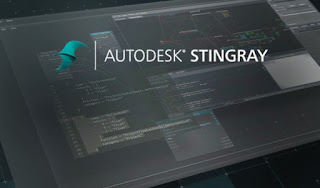Autodesk's Stingray gets into the Game
With their initial announcement of stepping into the game development arena made back in March, Autodesk finally launched their Stingray game engine this past week. Autodesk is going after small to mid-sized studios that don't have large programming teams so ease of use and simplicity to create content is a must if Stingray wants to compete against game engines like Unreal 4 and Unity 5. Built around the Bitsquid engine it bought last year, it has equipped the engine with node-based scripting tools to make coding a drag-and-drop affair.
One advantage to Stingray is that Autodesk product users (Maya, 3DS Max, MayaT) will benefit from extra integration over these other engines. Autodesk will also be offering Stingray's C++ source code (for a fee) to companies that want deeper customization. "Live Link" is a Stingray feature for multi-platform testing. With Live Link, you can tweak a model inside Maya LT and see the changes in Stingray on a given platform in real time. You can also see live camera level fly-throughs, animations and other content.
Stingray also offers particle and other visual effects options, along with post-processing effects like depth-of-field, lens blur and motion blur effects. It can use NVIDIA's PhysX physics system and works with Autodesk gameware tools like Beast for global illumination, HumanIK "ragdoll" physics, and Scaleform.
On top of gaming, the company sees the tech as being useful for architectural and design visualization and I expect we will see more of Stingray at upcoming AEC Hackathons. Stingray arrives to Windows via subscription starting on August 19th. Separately, Maya LT will include a free copy of Stingray for $30 per month as well a bit later this summer.





Comments